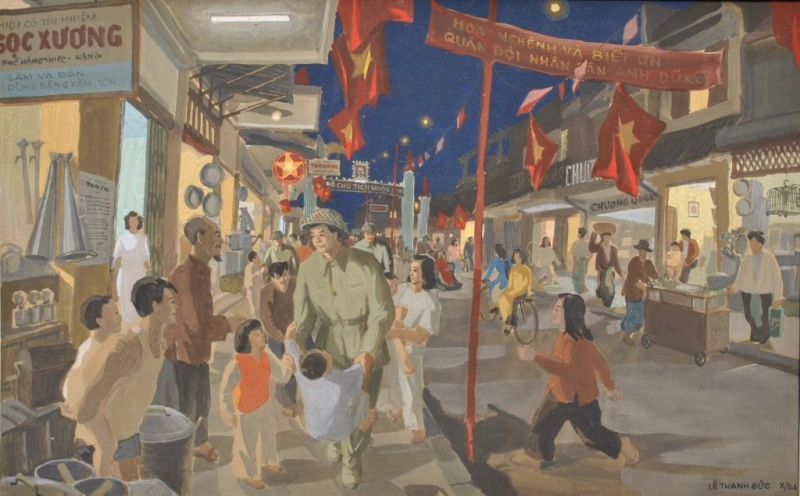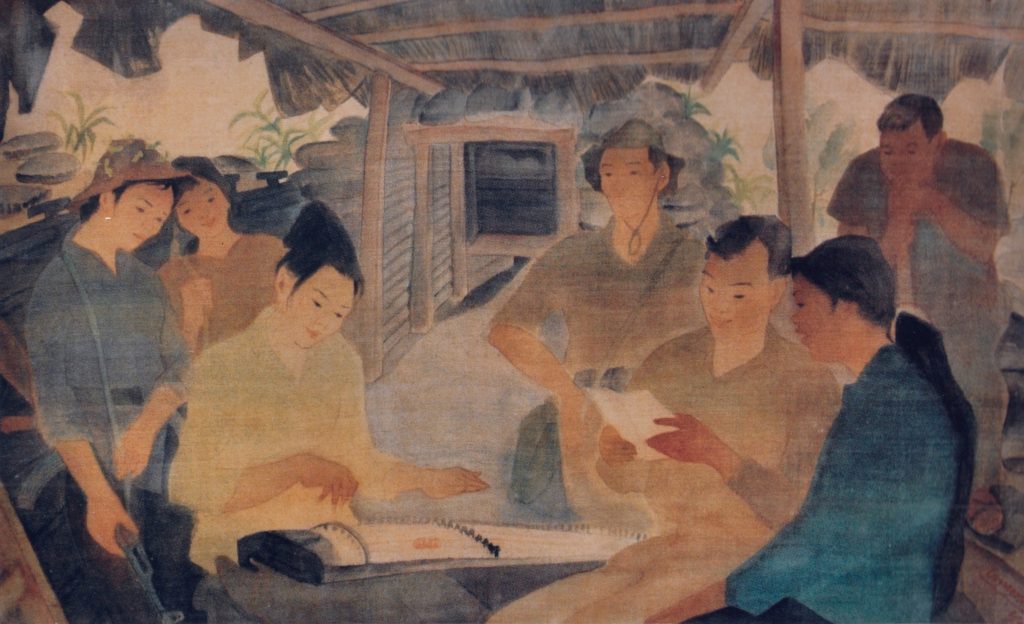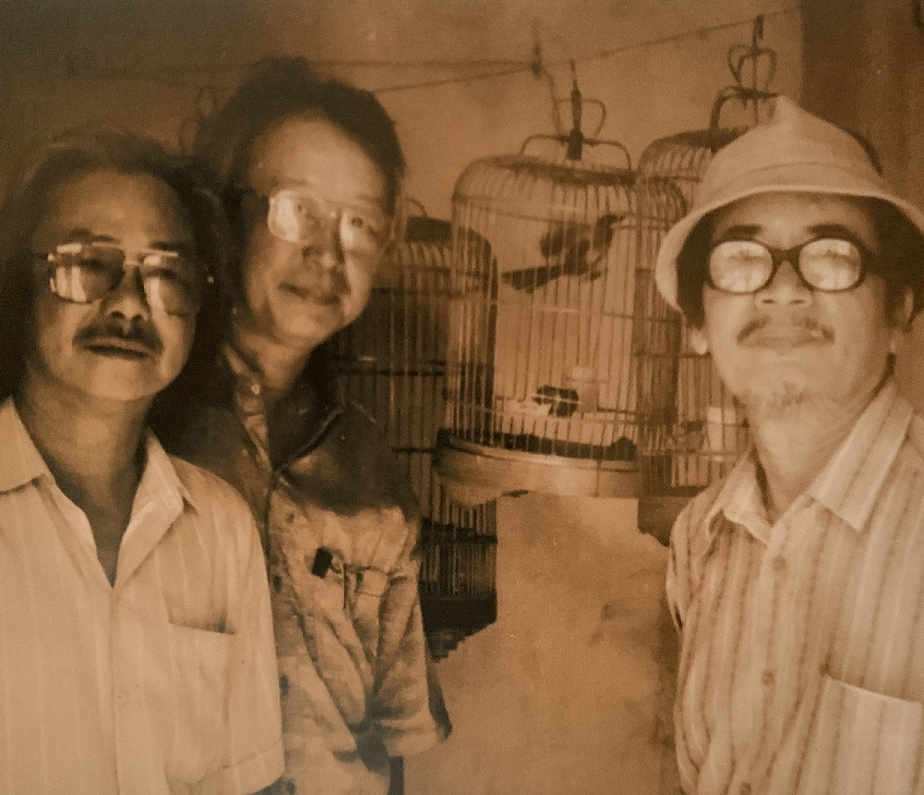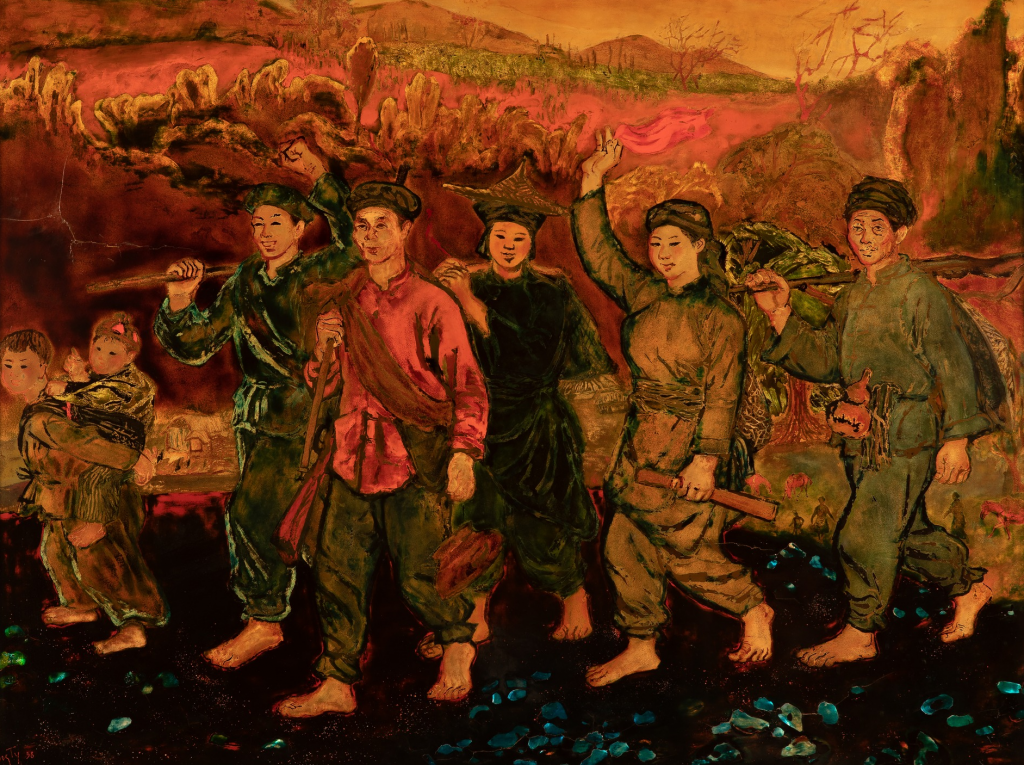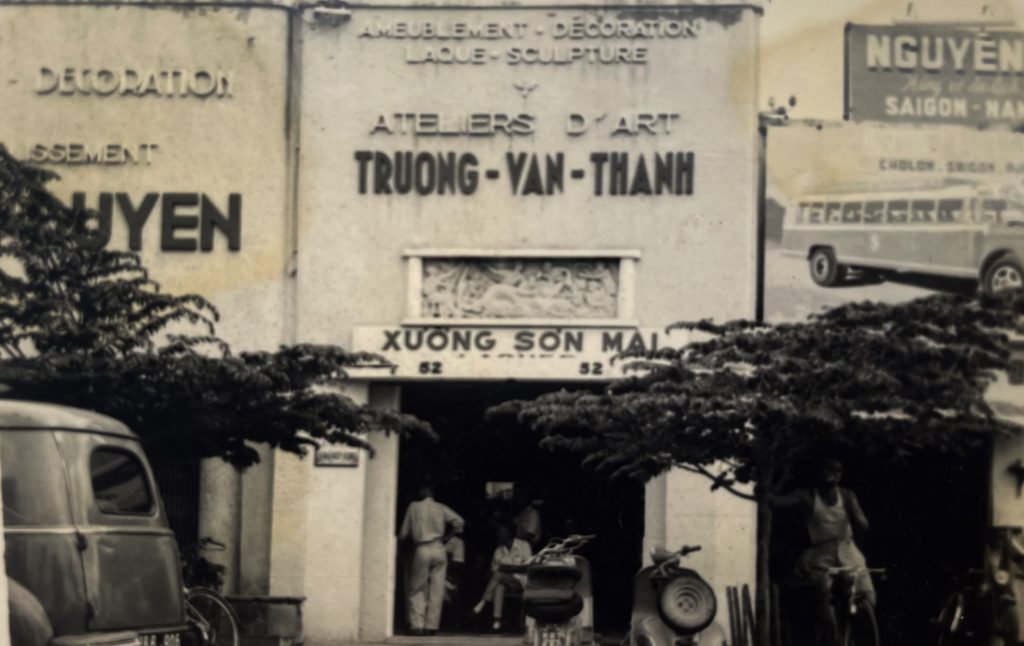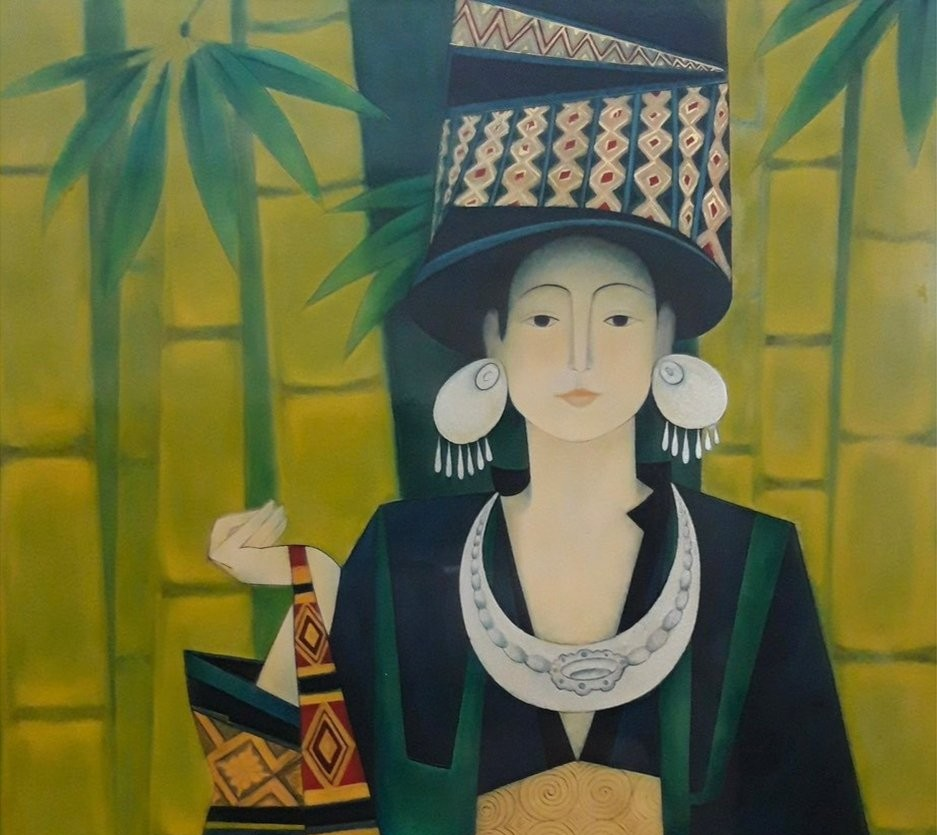Some of the study images by Nguyen Sang for the painting Citadel of the Fatherland
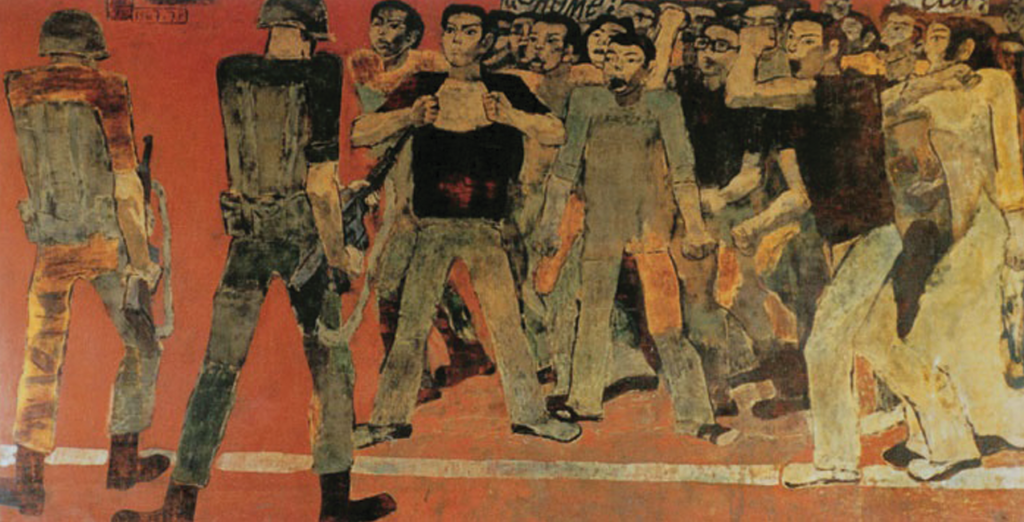
NGUYỄN SÁNG (1923 – 1988). Citadel of the Fatherland. 1967 – 1978. Lacquer.
Collection of Ho Chi Minh City Museum of Fine Arts
Modern art seems to have transformed the entire concept of painting. Nowadays, it is difficult to have strong definitions for genres which depend on classic such as historical paintings, battle paintings, religious paintings, even still life paintings, portrait paintings, landscape painting…
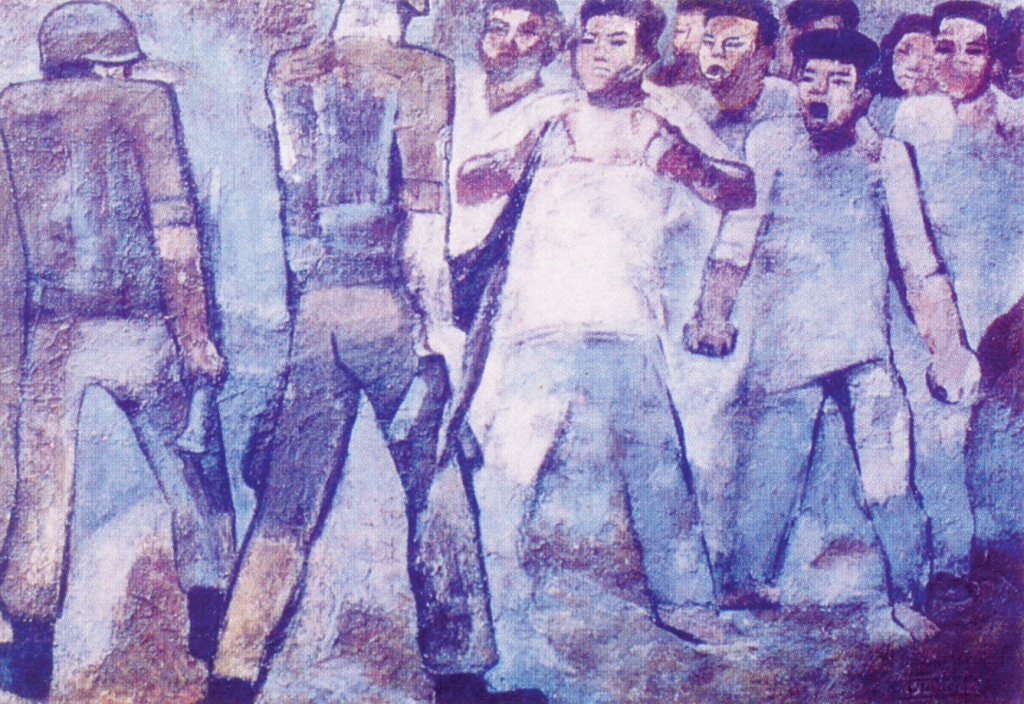
NGUYỄN SÁNG (1923 – 1988). Citadel of the Fatherland. 1967. Oil. Private collection, Hanoi.
Countless paintings of the modern period, it can be said, exist in their own right as separate forms of painting, making it necessary for us to receive them as entities according to a certain hypothetical frame of reference. They are located in the human mind, touching us without needing to be clearly defined in terms of genre.

NGUYỄN SÁNG (1923 – 1988). Sketch of the entire painting ‘Citadel of the Fatherland’. 1978. Graphite.
Pham Van Thong Collection, Hanoi.
* * *
In our country, if some paintings like Soviet Nghe Tinh (collectively painted), or Fight against taxes in 1930 by Nguyen Tu Nghiem or Cochinchina in 1940 by Huynh Van Gam – it is possible to call them historical paintings – then could paintings like The Heart and the Gun Barrel by Huynh Van Gam or Citadel of the Fatherland by Nguyen Sang be called historical paintings?
Yes, both of the paintings by Huynh Van Gam and Nguyen Sang come from historical events, inspired by history, but that history is concurrent with the reality, parallel to the creative process of the artists, with the spirit of “participation” which is very direct, very close to the actions of artists who paint propaganda pictures – it is difficult to call them historical paintings.
Therefore, such paintings were once called under the name: “Political composition.”
As for the painting Citadel of the Fatherland by Nguyen Sang, in fact, there are two different versions. One version was painted in oil in 1967. The other version was developed in lacquer, in 1967-1978. The first version is an political composition. The second version, it can be said, is both a political composition and a historical painting.
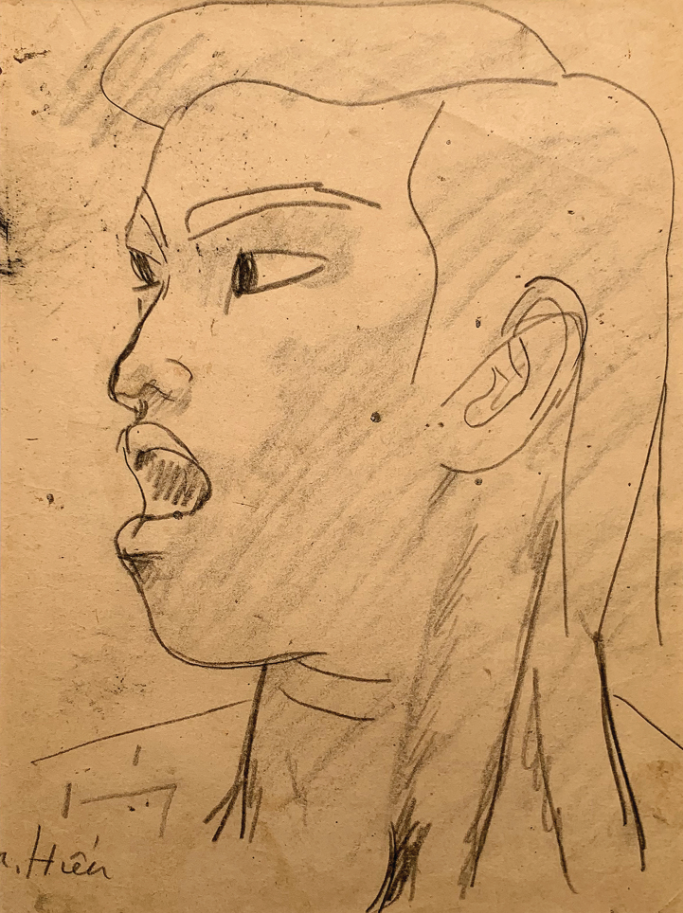

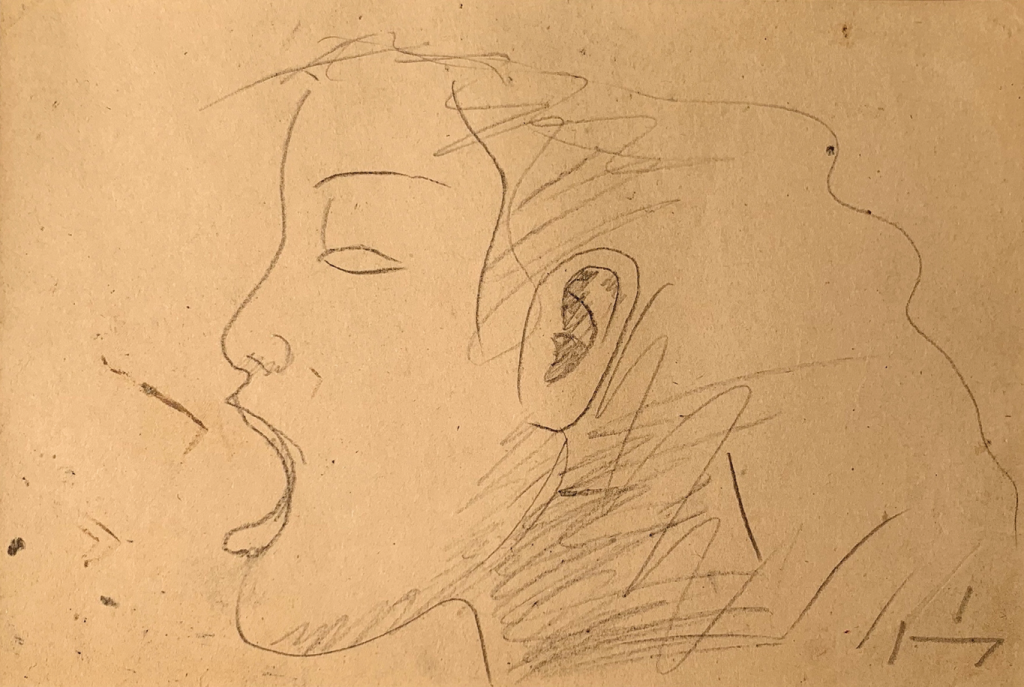
NGUYỄN SÁNG – Study images of models name Hieu, Viet… 1978. Graphite.
Pham Van Thong Collection.
* * *
Nguyen Sang is an artist who left behind very few documents, from sketches, study images, sketches to prototypes (carton), causing us to know very little about the process of making his work. At the Vietnam Fine Arts Museum, there is still a sketch for the painting Party admission on the battlefield of Dien Bien Phu, but for a long time no one has seen it.
Fortunately, recently, Mr. Pham Van Thong in Hanoi bought from a relative of Nguyen Sang’s family in Ho Chi Minh City a very significant number of documents, including a sketch and many study images by Nguyen Sang for the painting Citadel of the Fatherland.
If compared with the oil painting Nguyen Sang painted in 1967 in Hanoi, this sketch and most of the study images were made by Nguyen Sang to serve the lacquer version painted in 1978 in Ho Chi Minh City. He expanded the painting horizontally, creating a panorama (122×245 cm), adding characters, accurately investing in graphics and spatial structure…
In the words Nguyen Sang used to say: The first oil painting is just a “sketch”, an experiment to record the outburst of emotions (even the painting The enemy burned my village Nguyen Sang only considered a sketch).
According to Nguyen Tu Nghiem’s assessment, Nguyen Sang is not only a man of ideas, he is also a man of initiative and skill. The development of Nguyen Sang’s art, in fact, had always been based on an extremely solid professional foundation, which is one of the important factors that create the persuasiveness of his art. Career is also a means for Nguyen Sang to express his rich creativity, complete freedom, no squeamishness, and a wide range of thinking.
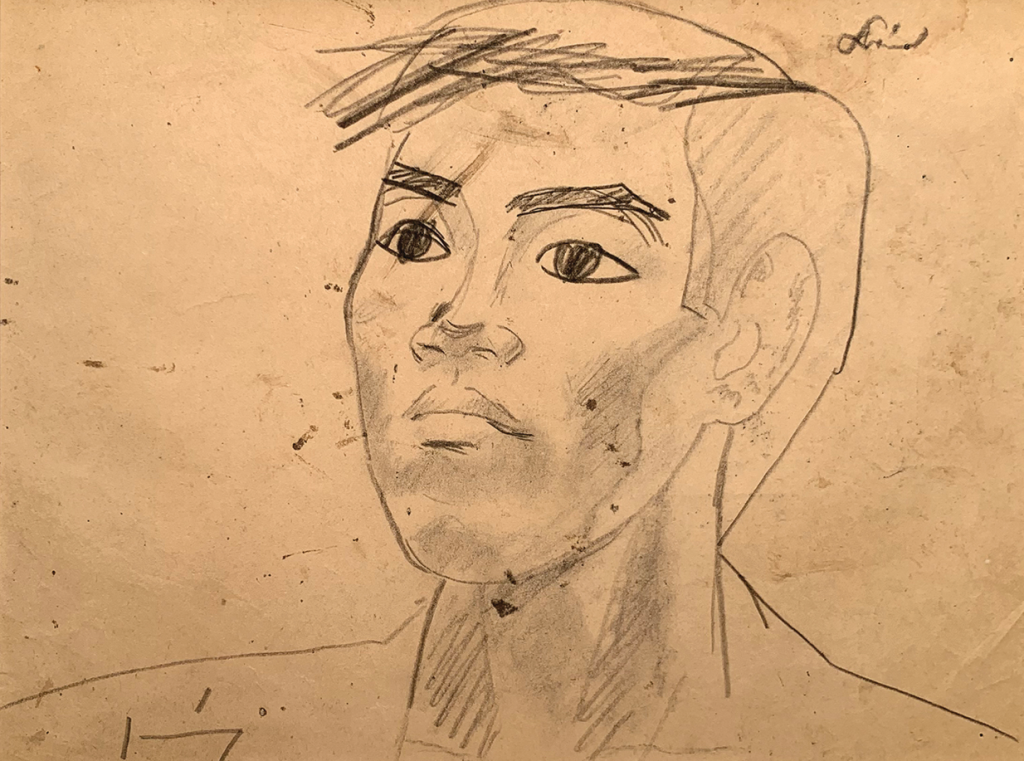


NGUYỄN SÁNG – Study images of models name Linh, Tam and the hand positions. 1978. Graphite.
Pham Van Thong Collection, Hanoi.
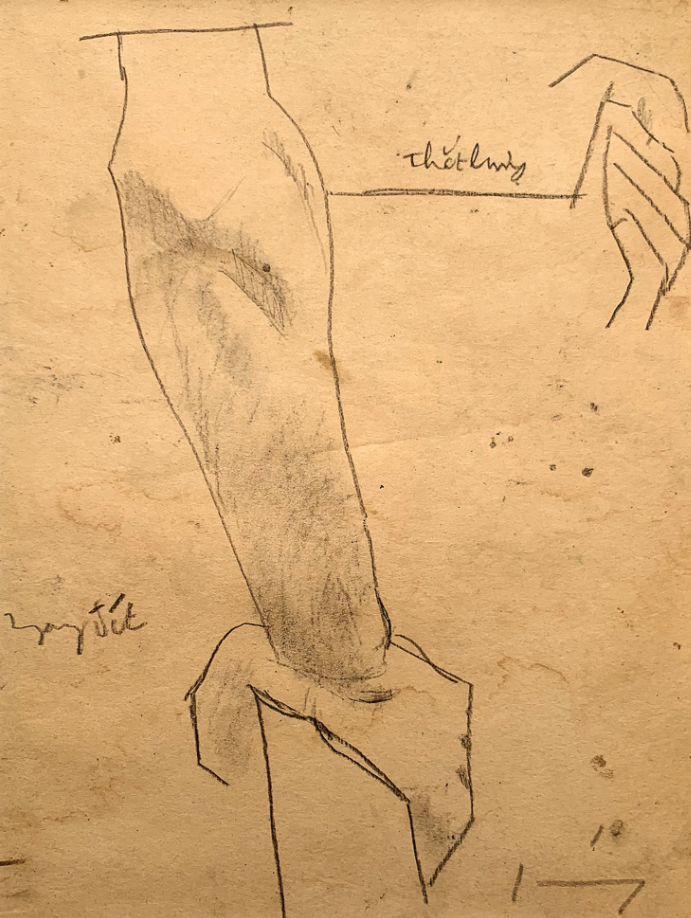

NGUYỄN SÁNG – Study images of hands holding guns of the American soldiers and the M.16 gun. 1978. Graphite, pen.
Pham Van Thong Collection, Hanoi.
People often say “shapes by Sang”, but they often equate it with Nguyen Sang’s “inventing” drawing ability. In truth, Nguyen Sang could simplify anything very well, but it is the crystallization of a long process of observation, study and training, always starting from reality, from what is seen – and first of all: Thanks to his special talent and unconscious power.
Nguyen Sang, it can be said, is one of the last modern-classical masters who is proficient in painting with the studio tradition, building characters based on models (living models). Through the study images for the painting Citadel of the Fatherland, we can see that Nguyen Sang’s study was very focused. He delved into the portraits of the characters of the student movement in Southern cities fighting for the American imperialists to “Go home / Back to your country”, strongly demonstrating the spirit and charismas of their Southern characteristics. The posture, movement, and especially the accumulation of energy in the arms, hands, the only weapons of the students are also no exception to that focus. Interestingly, Nguyen Sang painted two American soldiers standing with their backs turned, but he carefully studied the M.16 gun (US carbine) to portray them. And the two American guns are an important characteristic sign marking a historical period through Nguyen Sang’s dialectical perspective.
* * *
The epic Citadel of the Fatherland (lacquer material), as mentioned, was painted by Nguyen Sang in 1978 in Saigon. At that time, his young wife, Ms. Nguyen Thi Thuy, was still alive and helped him a lot during the painting process. This is also the largest painting that Nguyen Sang had ever painted, currently on display at the Ho Chi Minh City Museum of Fine Arts.
Written by Art critic Quang Viet (Ha Thai Ha), published in Fine Arts Magazine March & April 2019


